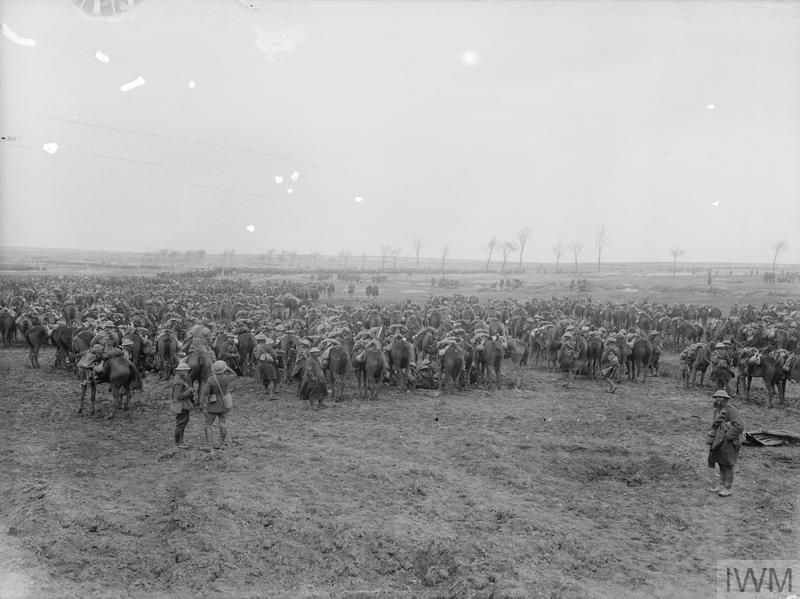Hindenburg Line
A series of very large scale offensive operations that advance to and break the Hindenburg Line system. Carried out by the First, Third and Fourth Armies these victories rank among the greatest-ever British military achievements. The German Army fights on but it is increasingly clear that their ability to do so is declining fast. Canadian, Australian, New Zealand and the United States Divisions all play key parts.
The Honour was awarded to the 4th Hussars.
Canal du Nord
The Battle of Canal du Nord was part of the Hundred Days Offensive of the First World War by the Allies against German positions on the Western Front. The battle took place in the Nord-Pas-de-Calais region of France, along an incomplete portion of the Canal du Nord and on the outskirts of Cambrai between 27 September and 1 October 1918.
The Honour was awarded to the 4th Hussars.
Detail
It was now decided that one regiment in the 3rd Brigade should be sent to each of the Corps in the Army. The result of which was the 4th Hussars being sent to the 8th Corps.
On the 10th of September, the regiment marched to Divion, where everybody got good billets, and the horses were in a good stable.
The regiment remained at Divion for the period 10th-27th September, carrying out squadron and regimental training, special attention being paid to divisional cavalry work.
On the 28th the warning order was received in the afternoon, and the regiment marched at 8 pm via Bajus, Haute-Auvesnes, and Warlus to Weilly, arriving at about 2.30 am. Horses were in the open here, and the men in Adrian huts. On the 29th, after a quiet morning, it started to rain very heavily at 6 pm and continued till 10.30 pm.
As no orders for a move had arrived, everybody expected another peaceful night’s sleep, however. at 10.45 pm orders came in, and the march was resumed at 12 midnight, via Croiselles and Queant, to Inchy Lock, where they arrived at 6 am.
The march was all through a devastated area, and it was very cold. They remained in bivouac near Inchy Lock. When it became light on the 30th it was found that the field allotted to the regiment was a mass of recent shell-holes. This was due to the fact that the Canadians had attacked the canal the day previous, and had pushed on through Bourlon Wood.
Everybody got busy and dug themselves in. The result was when the regiment left there was a regular underground town: even some of the horses had underground stables. Although there was a lot of bombing in the area, the regiment suffered no casualties except one horse wounded.
The Canal du Nord was very interesting, as one could see exactly how the Germans had held it, and all his bombs, machine guns, and ammunition were just as he left them when he fled from this part of the canal. The Canadians did not make a direct attack on it here but turned ‘it by forcing a crossing near Moeuvres.
On the 8th of October, the regiment was put on four hours’ notice, and later in the day at two hours’ notice.


